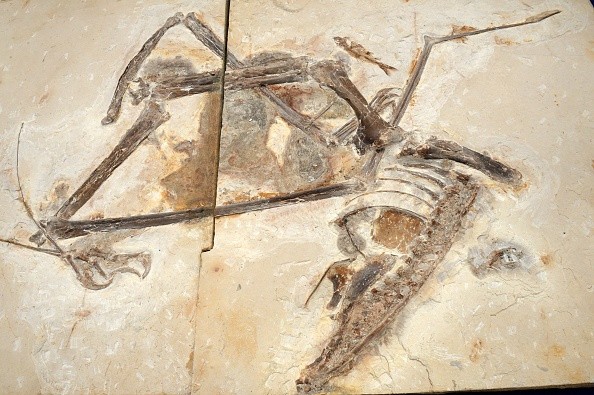An international team of scientists discovered a rare and new species of Pterosaurs on Angola's Atlantic Coast.
The fossils were said to that live million years ago. The report noted that the new species had 16-feet wings, larger than scientists thought.

The scientists said that the Pterosaur fossils are considered rare. Research has been instrumental in understanding ancient times, especially the existence of gigantic animals million years ago.
According to the study, researchers named the new species as Epapatelo otyikokolo. The report noted that Epapatelmo means wing in the Angolan Nhaneca dialect. Meanwhile, otyikokolo means lizard.
Starting in 2005, the research said that the international team collected 14 bones of Epapatelo otyikokolo in Bentiaba, Angola. Reports said that Bentiaba had been an important place for discovery, calling it a museum in the ground.
Fossils of the said species are being displayed in the museum of Smithsonian's National Museum of Natural History.
The research explained Pterosaur fossils are considered rare in sub-Saharan Africa, noting that they might have existed during the late Cretaceous.
Researchers have been looking into the existence of unknown species during ancient times or millions of years ago.
Team member Michael J. Polcyn added that the discovery of fossils would help decipher their ecological role. He said the creatures were flying on Africa's coast 75.1 million years ago. Polcyn is also a research associate at the Huffington Department of Earth Sciences and a senior research fellow at Southern Methodist University.
The research was published in the Diversity journal. It is also available to read on the Phys.org website.
The report explained that the existence of Epapatelo otyikokolo was a fish-eating species that was similar to seabirds, according to the study.
Also Read : 240 Million Years Old Snake Ancestor Skeleton Discovered That Could Help Unlock Evolution Mysteries
Meanwhile, Paleontologist Louis L. Jacobs explained that the discovered species could live in open-water environments, noting that the pterosaur species was large.
Jacobs is also an SMU professor emeritus of earth sciences.
240 Million Years Old Snake Ancestors
In the previous news report, researchers found a 240 million years old fossils of a snake ancestor in Scotland. The discovery could help understand the evolution of reptiles, such as lizards and snakes.
Amazingly, the fossils were said to be in good condition. When the researchers analyzed the fossils, they explained that there were ancestral traits with other reptiles.
With the discovery, the researchers would look into the ancestral traits of other reptiles to the old fossils. The study used high-resolution and advanced X-rays to analyze the said fossils.
518 Million Years Old Worm
On the other hand, discovering old fossils is crucial to many to observe the connections of today's species to ancient species.
Recently, recent research found that the discovered 51 million years old worm could resemble the ancestors of major living animals today.
Researchers who unveiled new and important discoveries emphasized the need to conserve fossils and continuous studies to reconnect the past to the present.
Related Article: Research Shows 518 Million Years Old Worm Resembled Ancestry of Three Major Living Animals
© 2025 NatureWorldNews.com All rights reserved. Do not reproduce without permission.





